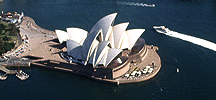Australia’s Federal Election 2025 Has Officially Begun!
//Preface//
Australia’s Federal Election 2025 Has Officially Begun!
Prime Minister Albanese has officially confirmed the election date, and the fierce "battle for seats" has already begun.
However, with the release of a significant new data point, Australian businesses are now facing a different concern…
#01:
Election Launch & Seat Battle
Australian Prime Minister Albanese has officially announced that the Federal Election will be held on May 3, marking the start of a five-week campaign.
He will face off head-to-head with Opposition Leader Dutton in a contest for national leadership.
This election is crucial for the Labor Party – currently holding 78 seats in the House of Representatives, just 3 seats above the majority requirement. Losing these three seats could result in a hung parliament, forcing Labor or the Coalition to form government in cooperation with independent or minor party MPs.
On the other hand, the Liberal-National Coalition needs to win at least 19 seats to form a government independently, making Dutton’s challenge extremely daunting.
Moreover, the rise of Teal independents and minor parties such as the Greens has further complicated the electoral landscape.
In the 2022 election, independents and minor parties secured a record 19 seats in the House. Whether they can further expand their influence this year will be one of the key factors in determining the outcome of the election.
It is worth noting that although Labor and the Liberals are at odds on many policies and positions, they share a common stance on an issue of great concern to the Chinese community – immigration. Both parties advocate for reducing immigration.
#02:
Capital City Populations Hit Record High – “Cutting” Immigration Has Them Alarmed
According to the latest data from the Australian Bureau of Statistics, over the past 12 months, Australia’s capital cities have seen an increase of 430,000 residents, primarily driven by overseas migration!
Data shows that the total population of Australia’s capital cities has now reached 18.4 million! In this growth of 430,000 residents, nearly 90%—or 373,000 individuals—are net overseas migrants. Although this figure has dropped from a peak of 520,000 last year, it remains well above pre-pandemic levels.
As in previous years, Sydney and Melbourne stand out, collectively accommodating 40% of the nation’s population, totaling an impressive 11 million residents.
Over the past year ending in June, Sydney added 107,500 residents, reaching a record 5.6 million, while Melbourne increased by 142,600, reaching 5.4 million. Notably, Melbourne saw a net gain of 121,400 migrants, and Sydney a net gain of approximately 120,886.
It is noteworthy that Perth, with a growth rate of 3.1% (total population nearly 2.4 million), is now the fastest-growing capital; Brisbane added 72,900 residents (total population 2.8 million), with each absorbing 53,414 and 44,259 migrants respectively.
Data also indicates that many of these new migrants are students, boosting populations in suburbs surrounding universities, which have become hotspots for population growth.
For example, Melbourne’s Carlton area, buoyed by the presence of the University of Melbourne, has seen the largest increase in migrants. Similar trends are observed in Sydney’s Haymarket (near UTS) and Melbourne’s Clayton (home to Monash University), where migrant numbers have risen significantly.
Currently, the outer suburbs of Australia’s capital cities remain the fastest-growing areas nationwide. Over the past 12 months, Canberra’s northern Taylor district surged by 29%, leading the country. Other rapidly growing areas include Fraser Rise-Plumpton and Tarneit North in western Melbourne, Box Hill-Nelson in Sydney’s Baulkham Hills area, and Strathnairn in Canberra.
Meanwhile, population growth in non-capital regions remains relatively slow. Australia’s regional population grew by 1.3%, adding 113,800 residents to reach 8.8 million. The Gold Coast, as the largest non-capital city, has added nearly 70,000 residents since 2019, bringing its total population to over 750,000.
KPMG population expert Terry Rawnsley noted that although the population growth in major cities has slowed, it is still higher than pre-pandemic levels.
According to budget data released by the government on Tuesday night, the Labor Party plans to reduce the net overseas migration to 260,000 in the 2025-26 fiscal year – a slight increase from previous estimates, yet still lower than the current fiscal year’s 335,000.
In addition, Labor once attempted to limit the number of international students to 270,000, though this proposal was opposed by the Coalition in November last year.
Meanwhile, Opposition Leader Dutton has pledged to reduce permanent migration by 25% – from 185,000 to 140,000 – but recently adjusted his commitment to reducing net overseas migration to 160,000.
Economists and businesses have expressed concerns over these developments.
As Australia’s two major parties tighten their immigration policies, some economists warn that this may further intensify the operational pressures already faced by businesses.
CreditorWatch’s Chief Economist, Ivan Colhoun, noted that in the next 12 months, Australian businesses will face multiple challenges, with slowed population growth being a significant factor.
“Many speak of a 'per capita recession,' but I believe this notion is misleading. For most businesses, population growth means more commercial activities, increased consumer spending, and a larger market demand.”
Conversely, if population growth slows, market dynamism may decline, potentially reducing overall economic demand and impacting business performance.
#03:
Key Issue Remains – Divergent Campaign Promises
Beyond the aforementioned topics, the biggest focus of this election is still the crisis in living costs, which affects the daily expenses of Australian families. Voters are highly concerned about the government’s ability to manage the economy.
During the campaign, both parties will propose solutions to economic issues, but their policy directions differ sharply.
Labor’s Policy Proposals:
-
Tax Reform: Moderate tax cuts for all wage earners
-
Healthcare Reform: Allocate AUD 8.5 billion to strengthen Medicare and reduce healthcare and medication costs
-
Education and Housing: Offer 100,000 free TAFE places and reduce HECS-HELP loans by 20%
-
Energy Policy: Commit to renewable energy development and continue to advance the national net-zero emissions target
Liberal’s Campaign Promises:
-
Economic Management: Cut “wasteful” government spending, reducing 41,000 public service positions
-
Fuel Prices: Lower the fuel excise from 50 cents to 25 cents for one year
-
Energy Policy: Promote nuclear power and build nuclear plants at seven locations as an alternative to coal
-
Housing: Allow first-time homebuyers to withdraw funds from their superannuation accounts for home purchases
Energy policy has emerged as the most contentious area between the parties. Dutton insists that nuclear power is the future, while the Albanese government focuses on renewable energy, sparking widespread debate.
This election is also influenced by global factors, including:
-
Potential new tariffs from US President Trump that could impact Australian trade
-
Ongoing conflicts in the Middle East and Europe, which exacerbate global economic instability
-
The Reserve Bank of Australia’s upcoming interest rate decision, which could become a pivotal factor in the election
In these challenging domestic and international circumstances, both Albanese and Dutton need to prove to voters that they are the best candidates to lead Australia through these difficulties.
In Conclusion:
The 2025 Australian Federal Election is entering a heated phase.
Labor and the Coalition are intensifying their campaigns, aiming to secure voter support.
As the electoral battle unfolds, how the electorate votes will determine Australia’s political and economic direction for the next four years.








